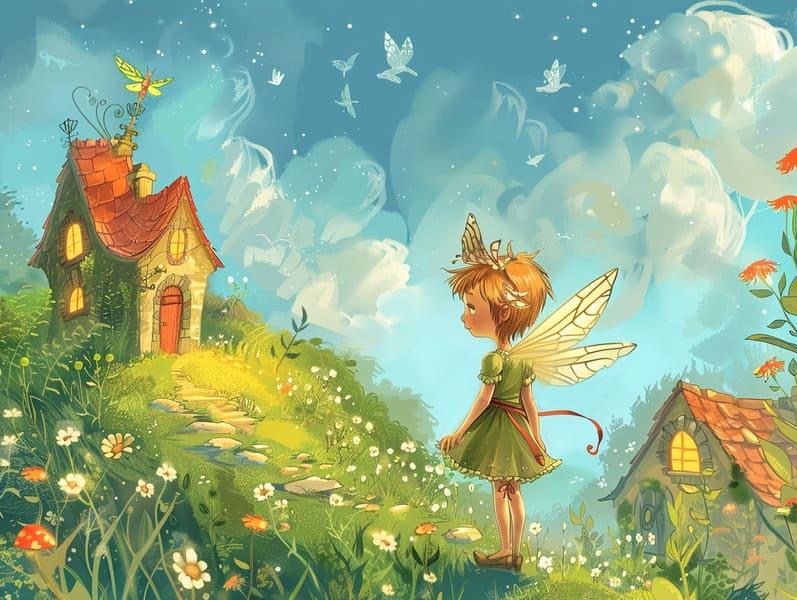The Evolution of Vintage Fairy Tales with the Consistent Attraction.
The Evolution of Vintage Fairy Tales with the Consistent Attraction.
Blog Article

Fairy tales for kids have old origins. These tales have been relayed from one generation to the next millennia before they were ever written down. They originated from a variety of backgrounds, including Eastern traditions. They were initially conveyed among mature audiences, often carrying themes and messages pertaining to the societal norms and beliefs of the time.
The Brothers Grimm, the two Grimm brothers, were among the first to compile and release many of these beloved tales. Their anthology, "Grimm's Folk Tales," included narratives like "The Story of Cinderella," "The Bread Crumb Trail," and "Little Snow White," which have since become essentials in the world of iconic fairy tales. Similarly, the Danish author's imaginative narratives, such as "The Story of the Little Mermaid," and "The Little Duckling," have touched hearts worldwide, cementing their place in the pantheon of famous fairy tales.
Despite their historical roots, fairy tales remain as meaningful as ever, especially as children's night stories. These fantastical tales are now available in different formats, including artistically illustrated books, delightful animations, and web-based fairy tales.
Their persistent charm can be credited to several charming aspects:
Important Morals: Traditional fairy tales often share important moral lessons. Fairy tales like "The Boy Who Cried Wolf" teach the importance of honesty, while "The Tortoise and the Hare" highlight the qualities of persistence and unassuming nature. These narratives offer children clear distinctions between right and wrong, molding their moral compass in a soft yet important way.
Empathy and Understanding: Timeless fairy tales frequently portray protagonists facing obstacles and hardships, urging audiences to feel with their struggles and back their triumphs. For instance, "Beauty and Her Beast" demonstrates the value of looking deeper to recognize the inner core of a character, strengthening sympathy and discernment.
Cultural Comprehension: Many ancient fairy tales are deeply ingrained in the cultural contexts from which they were born. Discovering these narratives can provide delightful insights into different cultures, fostering a sense of global insight and acknowledgment.
Fantasy and Innovation: The magical elements in traditional fairy tales—mythical entities—kindle children’s dreaming abilities. These tales bring readers to fantasy realms, boosting innovative thinking and check it out a sense of fascination that persists a lifetime.
Classic fairy tales are not only enchanting but also pedagogical. They provide charming tools in advancing various cognitive and affective skills in children. When classic fairy tales are read aloud, they develop speaking abilities by showing new linguistic elements and detailed sentence structures. This practice also fosters listening skills and mindfulness, as the young hang on every word, enthusiastic to see what happens next.
Furthermore, discussing the themes and characters of classic fairy tales can strengthen critical thinking and problem-solving abilities. The young are instructed to discover patterns, predict happenings, and comprehend cause and effect. These analyses also promote kids communicate their thoughts and feelings, promoting their emotional intelligence.
In today’s digital era, the availability of online storybooks has made these stories more attainable than ever. Internet sites and online apps present vast collections of timeless fairy tales that can be seen or played anytime, anywhere. Fairy tales read aloud are particularly favored, supplying an interactive way for the young to relish these charming stories. Audio stories and read-to-me stories carry characters and settings to life, often supported by entrancing audio effects and music that elevate the tale-telling adventure.
The timeless appeal of ancient fairy tales lies in their ability to shift to the present while keeping their central values. Contemporary renditions of these stories often highlight more inclusive figures and modern settings, making them familiar to today’s audience. However, the underlying themes of gallantry, benevolence, and impartiality remain unchanged, continuing to reach readers of all ages.
Old fairy tales also offer a sense of security and recognition. They feature a structured narrative with a apparent beginning, middle, and end, often drawing to a close with the solving of conflicts and the triumph of morality over wickedness. This steadiness can be placating for the young, affording a sense of steadiness in an shifting world.
Timeless fairy tales continue to enchant and educate new generations, maintaining their appeal and significance in modern society. As kids' bedtime tales, they deliver a perfect blend of allure and teaching, supporting moral values, empathy, and creativity. The availability of free fairy tales online and the widespread nature of fairy tales told out loud secure that these ancient tales remain reachable to new generations.
By sustaining and broadcasting these narratives, we continue to pay tribute to the rich tapestry of fantasy and cultural heritage. Whether you are reading a gorgeously illustrated book, delving into a internet collection, or playing an narrated book, the enchantment of timeless fairy tales is always within reach. These narratives convey of the persistent spell of storytelling and its ability to bring us together across epochs and places.
No matter if you are viewing a colorful picture book, enjoying a internet collection, or listening on an audiobook, the charm of children's fairy tales is always within reach.
These tales illustrate of the consistent influence of narratives and its ability to unify us across time and space, forming a connection that fascinates and enlightens alike.